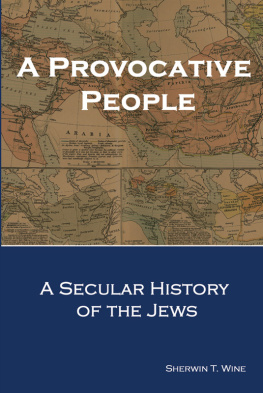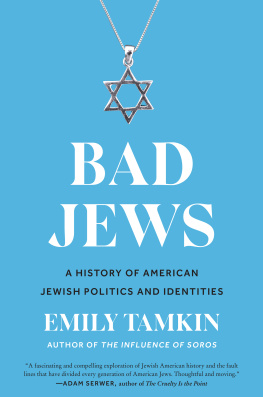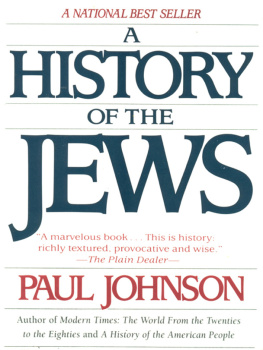Contents
Guide
Pagebreaks of the print version
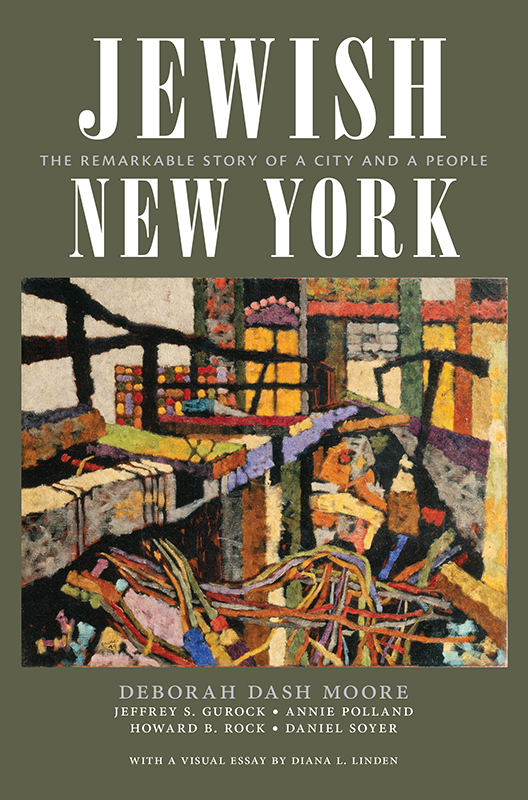
JEWISH NEW YORK
This work was made possible in part through the generosity of a number of individuals and foundations. Their thoughtful support will help ensure that it is affordable to schools, libraries, and other not-for-profit institutions.
The Lucius N. Littauer Foundation made a leadership gift before a word of this book had been written, a gift that set this project on its way. Hugo Barreca, The Marian B. and Jacob K. Javits Foundation, Mr. and Mrs. Peter Malkin, David P. Solomon, and an anonymous donor helped ensure that it never lost momentum. We are deeply grateful.
Jewish New York
The Remarkable Story of a City and a People
Deborah Dash Moore, Jeffrey S. Gurock, Annie Polland, Howard B. Rock, and Daniel Soyer
WITH A VISUAL ESSAY BY DIANA L. LINDEN

NEW YORK UNIVERSITY PRESS
New York
NEW YORK UNIVERSITY PRESS
New York
www.nyupress.org
2017 by New York University
All rights reserved
References to Internet websites (URLs) were accurate at the time of writing. Neither the author nor New York University Press is responsible for URLs that may have expired or changed since the manuscript was prepared.
Library of Congress Cataloging-in-Publication Data
Names: Moore, Deborah Dash, author. | Gurock, Jeffrey S., 1949 author. | Polland, Annie, 1973 author. | Rock, Howard B., 1944 author. | Soyer, Daniel, author. | Linden, Diana L., contributor.
Title: Jewish New York : the remarkable story of a city and a people / Deborah Dash Moore, Jeffrey S. Gurock, Annie Polland, Howard B. Rock, and Daniel Soyer ; with a visual essay by Diana L. Linden.
Description: New York : New York University Press, [2017] | Includes bibliographical references and index.
Identifiers: LCCN 2017012920 | ISBN 9781479850389 (cl : alk. paper)
Subjects: LCSH: JewsNew York (State)New YorkHistory. | CYAC: New York (N.Y.)History.
Classification: LCC F 128.9. J 5 M 665 2017 | DDC 974.7/004924dc23
LC record available at https://lccn.loc.gov/2017012920
New York University Press books are printed on acid-free paper, and their binding materials are chosen for strength and durability. We strive to use environmentally responsible suppliers and materials to the greatest extent possible in publishing our books.
Manufactured in the United States of America
10 9 8 7 6 5 4 3 2 1
Also available as an ebook
For Irene Golden Dash,
who made New Yorks Jewish history,
and for Elijah, Zoe, Rose, and Oren,
who are creating its future
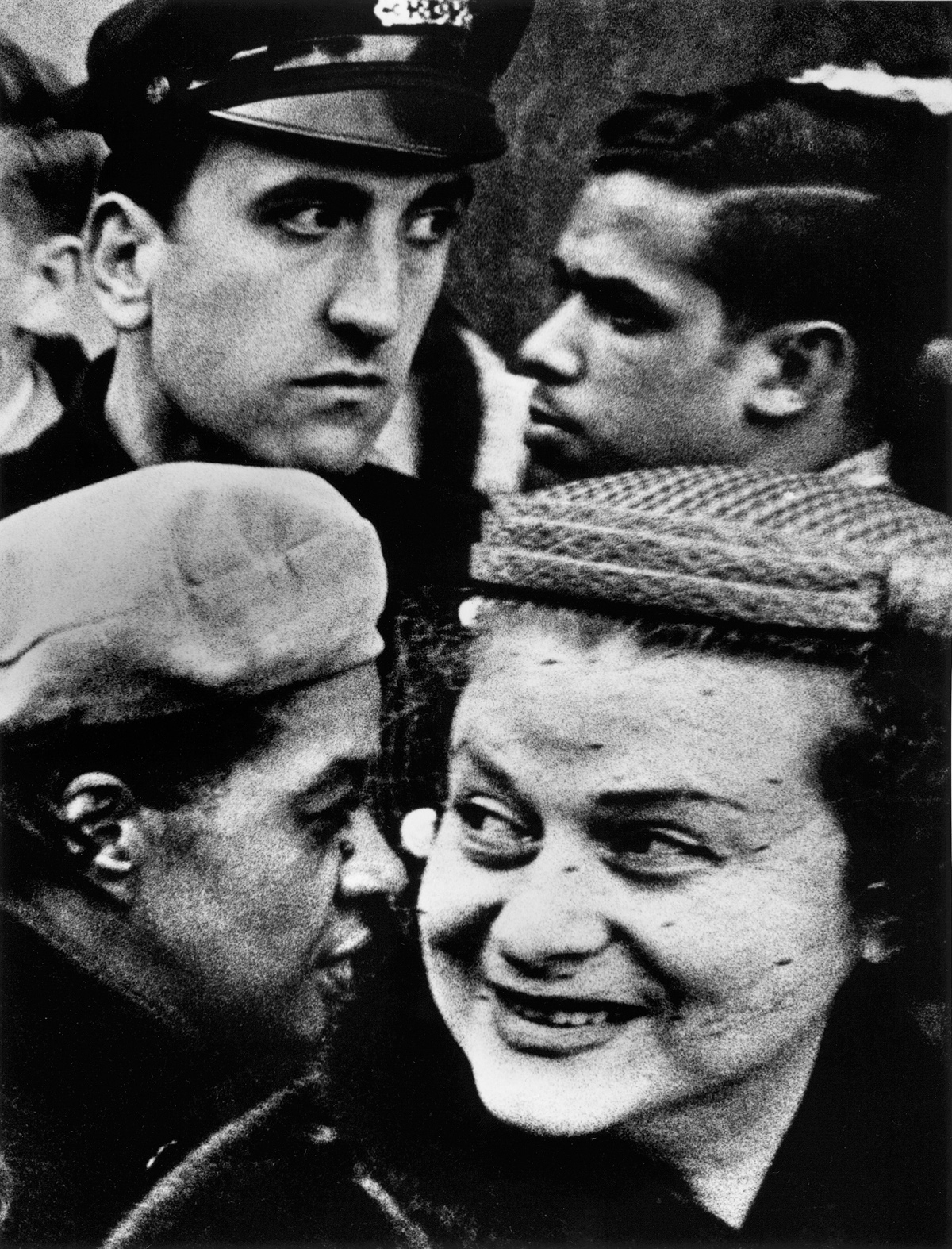
Macys Day Parade Watchers, 1954 , by William Klein. Pseudo-poster The American Dream: Italian cop, integrated Hispanic, Yiddish mama, African-American lady + beret the Melting Pot. William Klein, New York 195455 (Manchester, England: Dewi Lewis Publishing, 1995), 16. William Klein. Courtesy of William Klein.
CONTENTS
MAP OF NEW YORK CITY, 1911

This 1911 Rand McNally street map of Manhattan and sections of three other boroughs highlights the new underground railroad system and demonstrates how the subways linked lower Manhattan to uptown and the Bronx. The western line would spur apartment construction on the Upper West Side (west of Central Park), while the line that swerved east heading north to the Bronx would stimulate extensive building in Harlem (north of Central Park) and the south Bronx. The uniform grid pattern of numbered streets, running east-west, and numbered avenues, running north-south, gradually would acquire attributes of neighborhoods. In 1911 Jews lived primarily on the Lower East Side (the bulge that protrudes toward Brooklyn) but rapid transit was already carrying them out of this immigrant neighborhood uptown to Harlem and the Bronx and across the bridges spanning the East River to Brooklyn. Courtesy of Stephen S. Clark Library, University of Michigan.
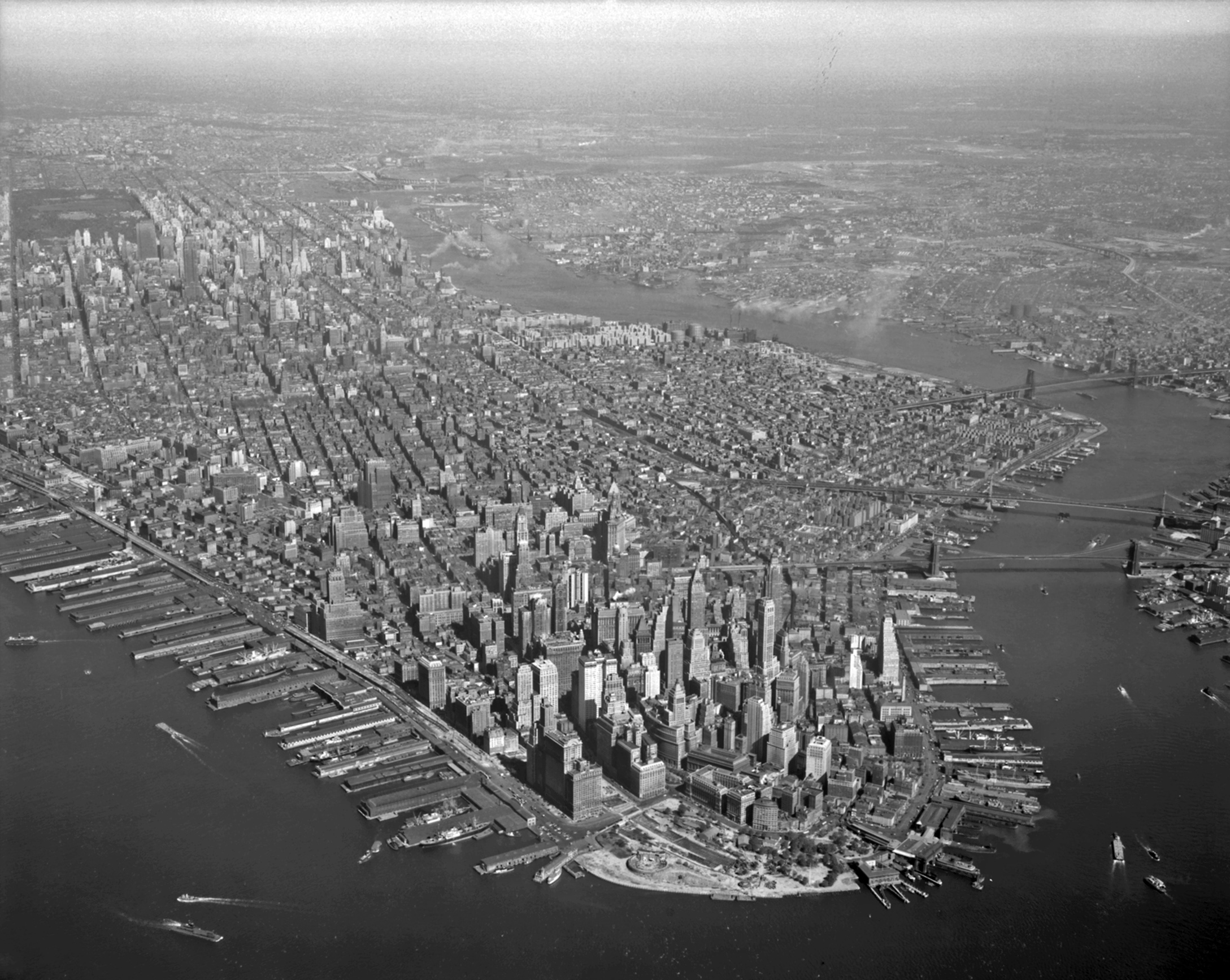
Aerial view of New York City focused on the southern tip of Manhattan island, with bulge of Lower East Side and three East River bridges visible; in the distance to the right is Queens. September 30, 1947. Courtesy of New York State Archives.
Introduction
How New York Became a Jewish City
Of all the big cities, Sergeant Milton Lehman of the Stars and Stripes affirmed in 1945, New York is still the promised land. Their presence helped constitute much of what was distinctive about New York as an American city. In return, New Yorks size and diversity allowed Jews to understand that there were many ways to be Jewish. The city welcomed Jews in all their varietyrich and poor, religious and radical, bourgeois and bohemian. New York Jews saw the city as a place where they could flourish and express themselves. As a result, they came to identify with New York, absorbing its ethos even as they helped to shape its urban character. When World War II ended in Europe with victory over Nazi Germany, New Yorks promises glowed more brightly still.
New Yorks multiethnic diversity, shaped in vital dimensions by its large Jewish population, shimmered as a showplace of American democratic distinctiveness. In contrast to a continent that had become a vast slaughterhouse, where millions of European Jews had been ruthlessly murdered with industrial and military efficiency, America, and specifically New York, glistened as a place Jews could and did call home. Even as they tended to cluster together, Jews navigated shared spaces in New York and lived next door to diverse others: Germans, Italians, Irish, African Americans, Puerto Ricans, Chinese, even white Protestants. The citys famous skyline had defined urban cosmopolitanism in the years after World War I. Now its thriving ethnic neighborhoodsJewish and Catholic, African American and Puerto Rican, Italian and Irishcame to represent modern urban American culture.
But as a poster city for immigration, with a majority population composed of immigrants and their children, New York also elicited negative perceptions. Many people in the United States derided New York as un-American because of its large Jewish and foreign population. Some even pictured it less as dominating the East Coast of the United States than as unmoored, located mid-Atlantic, halfway to Europe. A city of many languages, New York was, and continued to be, divided along multiple fissures of religion, race, ethnicity, class, and sexual orientation. Jews were part of this complex mix.
New York City represented more than immigrants. Its architecture and geography summoned icons of American culture, society, and economy. Wall Street had long symbolized finance capitalism. Times Square exemplified commercial performance culture, while Tammany Hall described not merely a building but a powerful Democratic political machine. Seventh Avenue named the garment center, Madison Avenue the heart of advertising, and Fifth Avenue elegant retail shopping. The Empire State Building, the citys and the nations tallest in height for decades, stood as an emblem of twentieth-century urbanism and broadcast the global reach of U.S. power and influence. These associations evoked New York as the largest city in the United States, its financial, commercial, and cultural capital, as well as the citys political identity as a stronghold of the Democratic Party.




